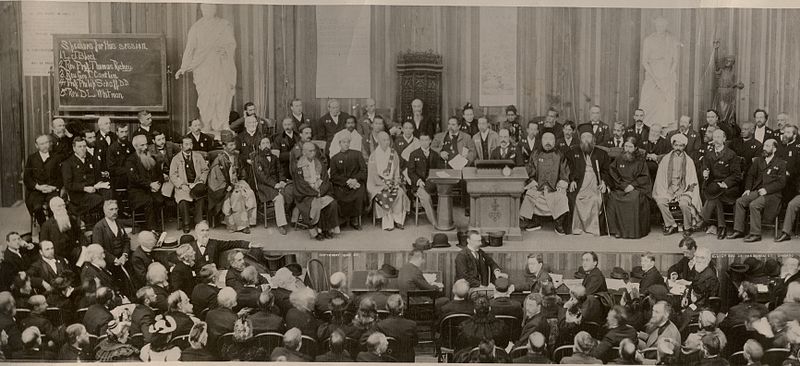“The monk pulled back his saffron robes to reveal his Smith & Wesson handgun.”
Buddhist lethality is a complex topic debated in various academic and philosophical circles. These discussions have ripple effects on policy and foreign attitudes, centre around Buddhism’s degree of involvement in politics, the influence of its teachings, and what fuels the unorthodox interpretations of its adherents. Lives are at stake across the world as the Buddhist vision crumbles. However, is the ‘Islamization of Asia’ threatening its doors, or is Buddhism disintegrating from within?
A revisionist historical lens and a less occidentalized perspective are required to understand the Buddhist role in the recurrence of violence in Southeast Asia. At the heart of these debates is a theological question marred by politics: why does it feel so contrary to Buddhist teachings for monks to commit violent acts, and to what extent do Buddhist ethics shape the commission of such crimes?
Buddhism in the West broaches the misconception of Buddhist-inspired violence. This narrative can be traced back to 1893, at the World Parliament of Religions in Chicago, where Japanese and Sri Lankan monks first exposed Buddha’s lesson to a wealthy caste of White Americans. Zen Master Soyen Shaku, Japanese layman Hirai Kinzo, and the Sri Lankan Buddhist reformer Anagarika Dharmapala, were the apostles of the Buddhist religion. In a manner in line with Huntington’s Civilization theory, they subsequently remarked how unaccepting Western societies were to these oriental beliefs. This was the start of the Western mythologizing of Buddhism, reducing it to a mere philosophy rather than a comprehensive religion. Furthermore, this portrayal has persisted in the Western imagination, with romanticized works such as The Dharma Bums and popular media such as Doctor Strange presenting a “besieged East” begging for a Western saviour.
Cultural denigration and simplifying Buddhism as a pacifist religion discards the controversial ethics of killing diffused in its ideology. Some Mahayana Buddhist traditions, notably in Tibet and China, allow for lethality solely if motivated by compassion and wisdom. By this definition, specific instances of homicide or altruistic suicide are tolerated. The most potent of these cases is the tradition of self-immolation by monks in Tibet for ‘the cause.’ However, these practices are not anchored explicitly in the fundamental tenets of Buddhism and stem instead from geo-cultural precedence amongst those communities. At the core of the acceptance of lethality in Buddhism is the 14th Dalai Lama’s exoneration of the killing of Osama Bin Laden in 2011 by US forces, describing it as a “necessary counter-measure.” This is so despite explicit teachings from the Buddha in the Dhammapada preaching forgiveness. Despite being such a decentralized religious community, these institutionalized approaches to the ethics of killing raise questions on any inherent Buddhist relation with lethality.
Inside this grey area, the question of violence by self-identified Buddhists must be resolved. However, before evaluating destructive actions committed in the name of Buddhist identity, it is crucial to re-emphasize that the development of the ethics of killing is not a centralized religious pillar, nor is it accepted by most Buddhist communities. It is vital to highlight essentialist views of Buddhism and to recognize the diversity of practices and beliefs within the religion.
One of the most pertinent scenarios where the legitimacy of Buddhist violence is disputed is the decades-long violence in the Southern provinces of Thailand. Muslim inhabitants constitute 85% of the population of Narathiwat, Pattani and Yala, and Buddhist minorities have armed themselves against the Malay Muslim insurgents. The narrative of the peaceful Buddhist is incomplete and dissuades analysis of other factors. After all, since the early 20th, a predominantly Buddhist Thailand has aggressively attempted to assimilate the Muslim Malays, “violating their cultural and religious identity.” Reactionary movements started surfacing in the 1960s, with the end goal of partitioning these southernmost regions from mainland Thailand. The search for autonomy by this stateless nation is intertwined with the fates of the native Buddhist minorities. Although there are no reliable figures on the number of displaced since the beginning of the conflict in 2004, some information suggests that over 30% of Buddhists fled due to the severe effect on economic development, the lack of education and other social services.
In this complex quarrel, can there be legitimacy to the claims by right-wing prophets such as Ashin Wirathu, that Buddhists should seek to violently ripost against the increasing “Islamization of Southeast Asia”? The Queen of Thailand certainly believed so. In the early 2010s, she instigated the creation of “soldier monks,” antithetical to the Western belief of supposed pacifism of Buddhist identities. This represented a cause of concern for invested HR watches in conflicts such as International Crisis Group or Amnesty International, which have “documented instances of soldiers bringing suspect insurgents to temple military compounds to interrogate, torture, and even execute them.” Whether this response can be deemed valid is up for debate. However, no religion has a monopoly on violence, even less violent adherents, nor does any religion have a greater propensity for violence.
Edited by Isaac Yong

Covering all news, from mainstream to wonkish.

